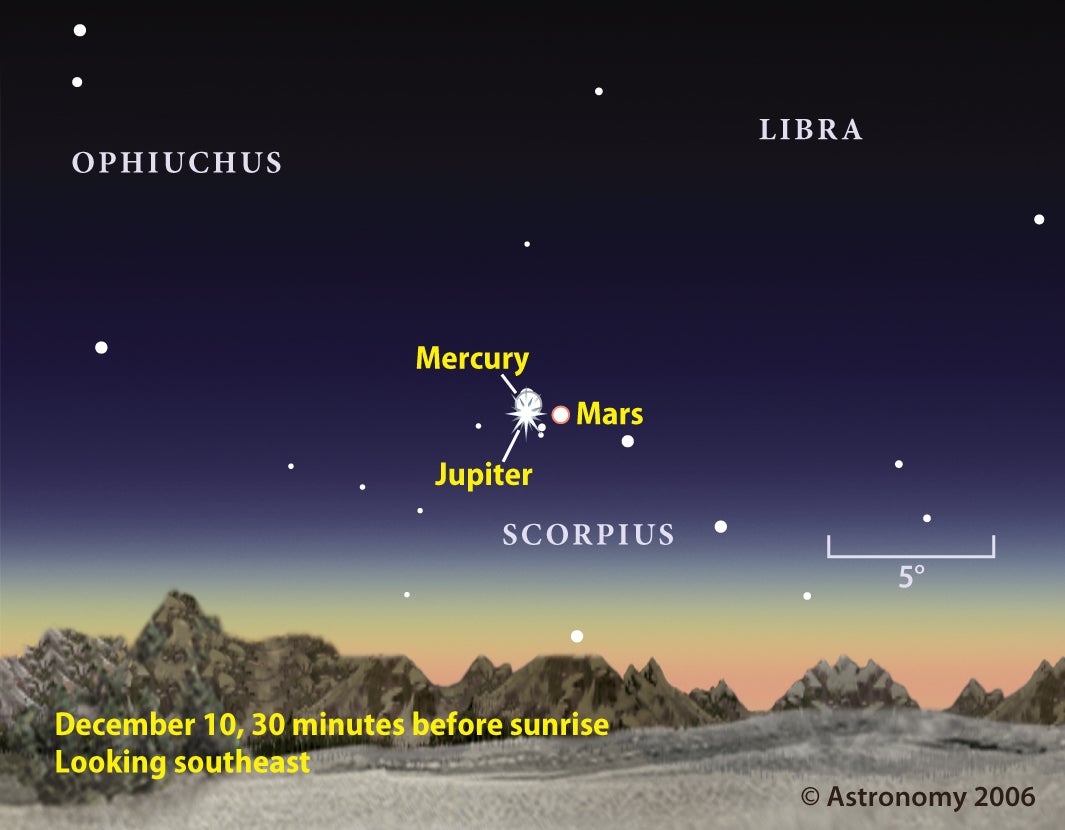
Watch the planets come together
Mercury has been shining brightly in the southeast before dawn since late November. The Sun rises a little after 7:00 a.m. local time, and you can easily find Mercury an hour before that. Thirty minutes before sunrise, Mercury has climbed to an altitude of about 10° – the width of your closed fist held at arm’s length. We’re now seeing the tail end of Mercury’s best morning appearance of 2006. You won’t get many better chances to see the innermost planet.
By December 7, blazing Jupiter should be easy to spot below Mercury, as long as you have a clear view toward the southeastern horizon. Jupiter shines noticeably brighter than Mercury, and becomes more conspicuous as it climbs higher each day. If you look carefully, you should see an orange dot between the two bright planets. Mars doesn’t shine as brightly as the others, and its color tends to blend in with the twilight glow.
Jupiter and Mars spend the rest of the week climbing toward Mercury. On the 9th, the three planets form a neat triangle in the growing twilight. Closest approach comes on the 10th, when Mercury and Jupiter come within half the Moon’s diameter of each other. Mars then lies just 1° to the pair’s right.
Astronomy‘s mission
Astronomy promotes the science and hobby of astronomy through high-quality publications that engage, inform, entertain, and inspire.
Astronomy news
This week’s sky events
Astronomy basics
Glossary of astronomical terms
Return to Astronomy “For the media” page
Decembet 7, 2006
WAUKESHA, WI &mdash For the only time in the next 47 years, three planets will huddle together in the predawn sky December 10. That morning, Mercury, Mars, and Jupiter will be closer than any three naked-eye planets will be until 2053.
This event, known as a conjunction, will be visible low in the southeast sky to the unaided eye, but binoculars will afford the best view. The three planets approach within 1° – or 2 Full Moon-widths – of each other. The illustration that accompanies this release shows what observers can expect to see.
Experts at your disposal
Astronomy magazine editors are available to discuss this event. To request an interview, please contact Matt Quandt at 262.798.6484 or mquandt@kalmbach.com.









